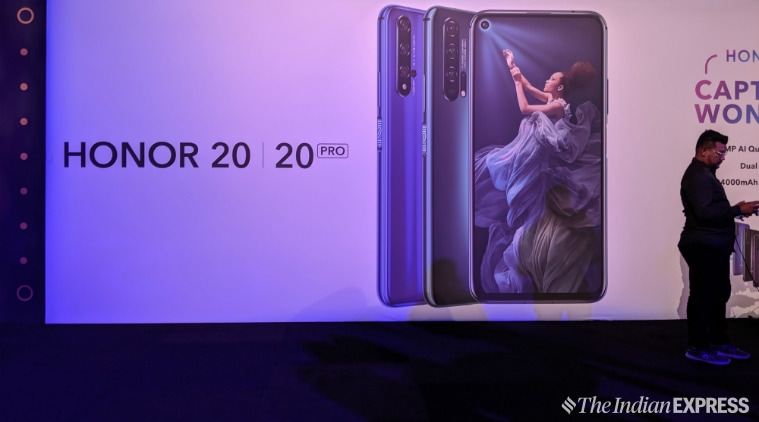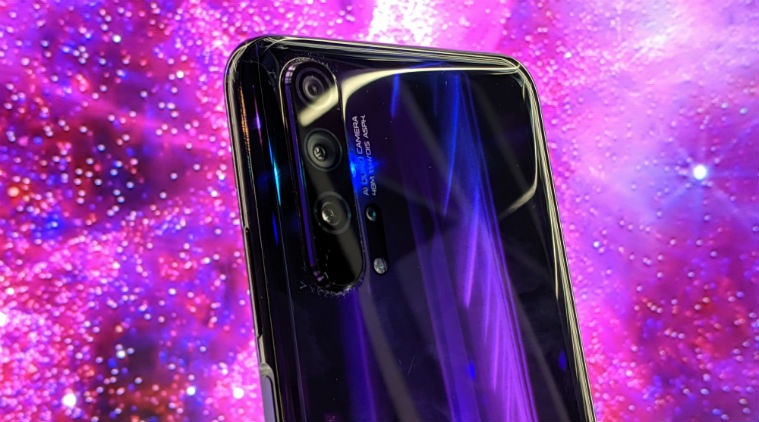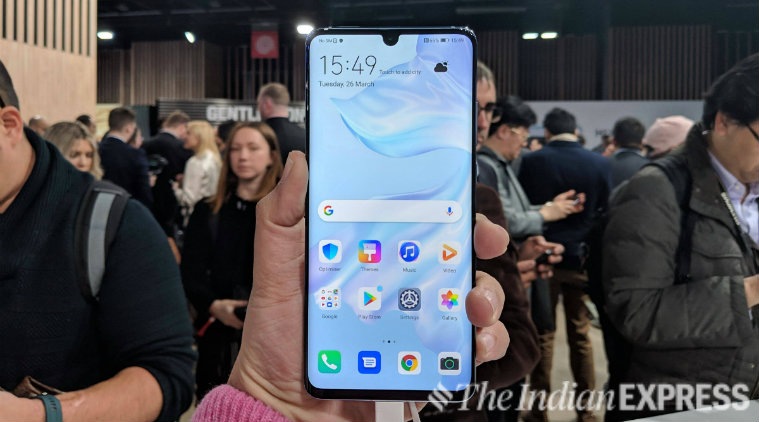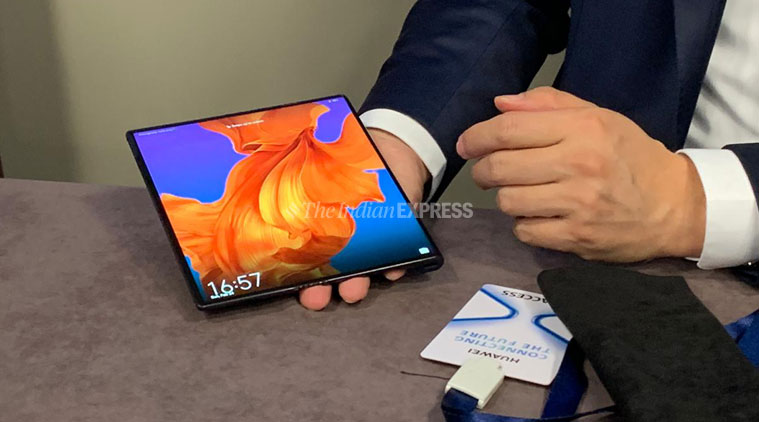by Anuj Bhatia
 It’s been a tough time for Huawei, the world’s largest producer of telecommunications networking equipment and the number two smartphone brand behind Samsung and ahead of Apple. The Chinese tech behemoth is in the centre of a US-China trade dispute, with the Trump administration adding Huawei to a trade blacklist that restricts the company from buying American components and software and doing business with other US companies.
It’s been a tough time for Huawei, the world’s largest producer of telecommunications networking equipment and the number two smartphone brand behind Samsung and ahead of Apple. The Chinese tech behemoth is in the centre of a US-China trade dispute, with the Trump administration adding Huawei to a trade blacklist that restricts the company from buying American components and software and doing business with other US companies.
Even though the commerce department said it would give a 90-day reprieve that will allow Huawei to continue doing business with American firms, the ban on the Chinese telecom giant still very much exists. Within hours of the government order, Google announced that it would stop licensing its Android mobile OS to Huawei, while companies such as Intel, Qualcomm and Broadcom reportedly cut supplies of key hardware components that are needed to make its devices functional.
The SD card association too dropped the troubled smartphone marker from its member list. The Wi-Fi Alliance, whose members include the likes of Apple and Qualcomm, said it had “temporarily restricted” Huawei’s membership in the wake of the US ban. Meanwhile. Microsoft has removed Huawei’s laptops from its online store.
Several European and Japanese companies soon followed suit, including British chipmaker ARM and telecom operators like EE and Vodafone, Japan’s Panasonicand Toshiba. All of these non-US companies announced that they would end all their business ties with Huawei which has been dubbed as ‘dangerous’ by US President Donald Trump.
The move has created a situation of panic in Huawei’s global chain, as the company is completely cut off from doing business with American firms. Huawei is highly dependent on US suppliers for semiconductors and software. Both smartphone and telecommunications businesses of Huawei could be badly impacted, industry experts warned.
Trump’s Huawei ban will impact the entire tech industry
The Trump administration’s ban on Huawei will not only hamper the growth of the telecommunications giant but will have an adverse effect on the sales of its US-based suppliers as well. Huawei reportedly spent $70 billion worth to buy parts from 13,000 suppliers last year and of that $11 billion was spent on U.S. suppliers. That included chipsets from Qualcomm and Broadcom, Microsoft’s Windows 10 and Google’s Android. According to research firm IDC, the Chinese tech giant saw year-over-year growth of 50.3 per cent in the first quarter of 2019.
According to research firm IDC, the Chinese tech giant saw year-over-year growth of 50.3 per cent in the first quarter of 2019.
 According to research firm IDC, the Chinese tech giant saw year-over-year growth of 50.3 per cent in the first quarter of 2019.
According to research firm IDC, the Chinese tech giant saw year-over-year growth of 50.3 per cent in the first quarter of 2019.
Chipmakers such as Intel and Qualcomm are under pressure because they will lose revenue if they suddenly found Huawei is no more their customer. Intel provides chips for Huawei’s laptops as well as servers, Qualcomm provides the Chinese company its processors and modems to be used in smartphones, Broadcom is a key supplier of switching chips, while Xilinx offers programmable chips used in networking. If the ban is fully implemented, the US government’s one action could have a devastating effect on the semiconductor industry in the short term.
Huawei wants to put China on the global map with its ambitious goal to lead in 5G. With the US cutting off Huawei from the US supply chain, it will force operators to replace Huawei equipment, and muscle down China’s bid to dominate the 5G era. But the issue here is that many of the top operators in the West are reliant on Huawei’s networking equipment, which is known to be inexpensive and reliable. If Huawei is denied the use of key components used in smartphones and telecommunications infrastructure equipment, it could slow the rollout of 5G and adoption of 5G in many countries. Let’s remember: Without 5G network, people would not be able to buy smartphones that have chips from Qualcomm. And it’s a loss not for Huawei or Qualcomm but for the entire smartphone industry.
According to research firm IDC, the Chinese tech giant saw year-over-year growth of 50.3 per cent in the first quarter of 2019 and claimed 19 per cent of the worldwide market share. That means the company has a chance to overtake Samsung as the top smartphone vendor in the coming quarters. But that seems impossible to achieve given the current circumstances. The lack of Google services on Huawei phones is a huge disruption.
The lack of Google services on Huawei phones is a huge disruption.
 The lack of Google services on Huawei phones is a huge disruption.
The lack of Google services on Huawei phones is a huge disruption.
The ban means Huawei will lose its ability to license Google’s Android mobile OS on its phones and will be compelled to use the open-source version of the operating system, the one that comes without the Play Store and all the Google Apps. AOSP, the Android Open Source Project, is free code for any smartphone maker. But this option would put Huawei months behind other Chinese OEMs that will gain access to next OS like Android Q, regular security updates and technical support. However, the US granted a temporary 90-day reprieve for Huawei, which will allow it to continue using American technology — at least for now.
Google says its services still will work on existing Huawei (including Honor devices) smartphones, though they won’t get any further software updates. However, the future is not certain. The lack of access to Google Play on future Huawei phones will present a huge challenge for the company outside of China. Android is the world’s most dominant mobile operating system. Without access to Google Play, Huawei phones will become pretty unusable, especially in Europe and Southeast Asia. The US ban is clearly intentioned to kill Huawei’s ability to sell its devices in the international market.
The impact has already started to show on the ground. Multiple reports suggest that Huawei phone owners are started to trade-in their smartphones after Android ban.
If that was not enough, the UK chip designer ARM has said it would also stop licensing its essential technology to Huawei. Qualcomm, MediaTek, Apple, Samsung and Huawei all have their own chips based on ARM’s intellectual property. That would mean Huawei could no longer make chips that rely heavily on the ARM architecture.
This is more catastrophic than losing access to Google services on its phones. Huawei can save its smartphone business with an alternative to Google’s Android OS, but without the support of ARM it would be really tough for the company to keep its in-house silicon effort going.
“They can’t do that. I don’t think there’s an answer on a substitute at this point, because everybody is using ARM for developing chips,” says Dinesh Prasad, who previously used to head devices business at Qualcomm India and South East Asia and currently is a CEO of BlueSky Inventions.
The only way left before Huawei is to develop a chip architecture on its own, but that would take years to build. That chip architecture also needs to support Huawei’s forthcoming operating system, because Android is designed for ARM-based chipsets.
Huawei’s Android rival raises urgent questions
Huawei said it can survive on its own and still continue selling smartphone without depending on Google’s Android operating system. The head of the Huawei’s consumer division Richard Yu recently told CNBC that the company will start rolling out the new OS as soon as this autumn of this year. Codenamed “Project Z”, Huawei has been rumoured to be working on its own operating system for seven years. Huawei’s operating system is also unlikely to succeed if it fails attract the third-party developer support.
Huawei’s operating system is also unlikely to succeed if it fails attract the third-party developer support.
 Huawei’s operating system is also unlikely to succeed if it fails attract the third-party developer support.
Huawei’s operating system is also unlikely to succeed if it fails attract the third-party developer support.
Even if Huawei comes up with an operating system as good as Google’s Android, it wouldn’t really matter to consumers living in China. There Google and its services are banned anyway. However, in markets outside of China, including Europe, India, the Middle East and Pakistan, an OS that lacks YouTube and Maps have zero chance to succeed. Consumers aren’t likely to buy Huawei phones if they lack access to Google Play, Maps and Google Assistant.
“This move will have critical impact toward Huawei’s business around smartphones. Huawei has its own mobile OS as a backup, but it’s not fully ready yet and it’s very difficult to build up the ecosystem as what Huawei has been doing on Android,” Forrester’s Principal Analyst Charlie Dai points out. Dai says, “Eventually it’s no good for consumers around the world, and it’s a pity that customer value facilitated by open-source spirit is now ruined by the politics.”
The lack of Google services on Huawei phones is a huge disruption. “We are talking about doing something which is equivalent of China outside of China. That’s very difficult call to do. We are seeing multiple companies struggle in the past. Qualcomm was trying to develop a whole ecosystem. So it didn’t take off, because the system wasn’t open enough, large enough for the kind of apps and services that the consumer needs,” Prasad said.
Huawei’s operating system is also unlikely to succeed if it fails attract the third-party developer support. That’s what happened to Samsung’s Tizen and Microsoft’s Windows Mobile. It’s because they didn’t offer an app ecosystem as strong as Google’s Android.
“It’s always a chicken and egg problem, whether you will build the app first or you get users first. And that’s why most of these other guys [Samsung, Microsoft…Firefox] have struggled, because they tried to latch on to a mammoth elephant like Google, who had so much of millions of app developers, and millions of apps sitting on their store.”
“The challenge is how do you proliferate the app and services ecosystem to that level. And then how do you ensure that consumers feel confident that you are being taken care of in terms of security and other aspect, which is what Google claims, in terms of enhancements and security packages,” he adds.
Google, Apple may be impacted
Google will also be impacted by the ban on Huawei but in the short term. It will lose some portions of revenue if Huawei loses its license to sell smartphones without Android mobile OS. But the impact of the Huawei ban on Google will be minimal in the long run. The tussle between the US and China is essentially about technology.
The tussle between the US and China is essentially about technology.
 The tussle between the US and China is essentially about technology.
The tussle between the US and China is essentially about technology.
“Google is losing a big OEM partner in the process, which is unfortunate given how much progress Huawei was making in areas like photography. Google’s OEMs like Huawei help carry the flag for the Android platform, and Google is losing one of its strongest players in the process,” said Bryan Ma, vice president of devices research at IDC.
In China, Huawei smartphones don’t come with Google services and the Play Store because the Chinese government has long blocked major US tech companies like Facebook and Google from operating there. Even in India, where Huawei (including Honor) has a market share of just 4.5 per cent, the ban won’t impact either Google nor Android much. But in Europe, Huawei has a sizable presence and thus it will hurt Google – at least in the short run.
The U.S.-China trade war and now the Huawei ban could impact Apple if China retaliates by banning its products. It would be a serious blow to Apple’s business. According to Analyst Rod Hall of Goldman Sachs, Apple’s earnings could drop by 29 per cent if the company’s products were banned in mainland China. The Cupertino company is heavily dependent on its supply chain in China, where the iPhone is assembled at Foxconn’s factory in Shenzhen.
“Regardless if China retaliates against American firms or not, a renewed wave of nationalism is helping to drive more interest in Huawei devices there, while some users rally against American brands like Apple,” Ma said. “This depends on the individual though; many users still see Apple as a desired brand despite the political clouds overhead.”
Samsung will gain most from the Huawei ban
Trump’s clampdown on Huawei could give Samsung a huge advantage to expand its market share in Europe and Southeast Asia. Over the past two-three years, Huawei made huge strides in the smartphone market. Its phones have continued to become better and sometimes outperforms Samsung’s flagships such as the Galaxy S10.
While Huawei says it will rollout smartphones with a brand new OS later this year, it’s hard to say whether consumers will be interested in buying phones without access to popular Google services and apps. With Huawei’s brand image taking a hit due to the geopolitical reasons, it would give Samsung a clear opportunity to focus on those markets where Huawei has outperformed the Korean company.
The US-China trade war is over future technology
The tussle between the US and China is essentially about technology. China wants to develop its own core technologies to lessen dependence on US technology, but that would take years. The semiconductor is one area where the US remains the global leader. The world’s top semiconductor companies – Qualcomm, Nvidia, Intel, AMD, and Micron- are all US-based. Chinese companies are heavily dependent on US suppliers for many critical components, including semiconductor. In 2017, Trump vetoed the sale of Qualcomm to a Singapore-based Broadcom citing national security.
5G is another area where two of the largest global economies want to dominate. The US government alleges that Huawei is using its 5G broadband network to spy on behalf of the Chinese government, a claim the company has repeatedly denied. The Trump administration is running a campaign around the world not to adopt Huawei’s 5G technology. The efforts have shown mixed results so far, with many European countries refusing to ban the Chinese company.
No comments:
Post a Comment